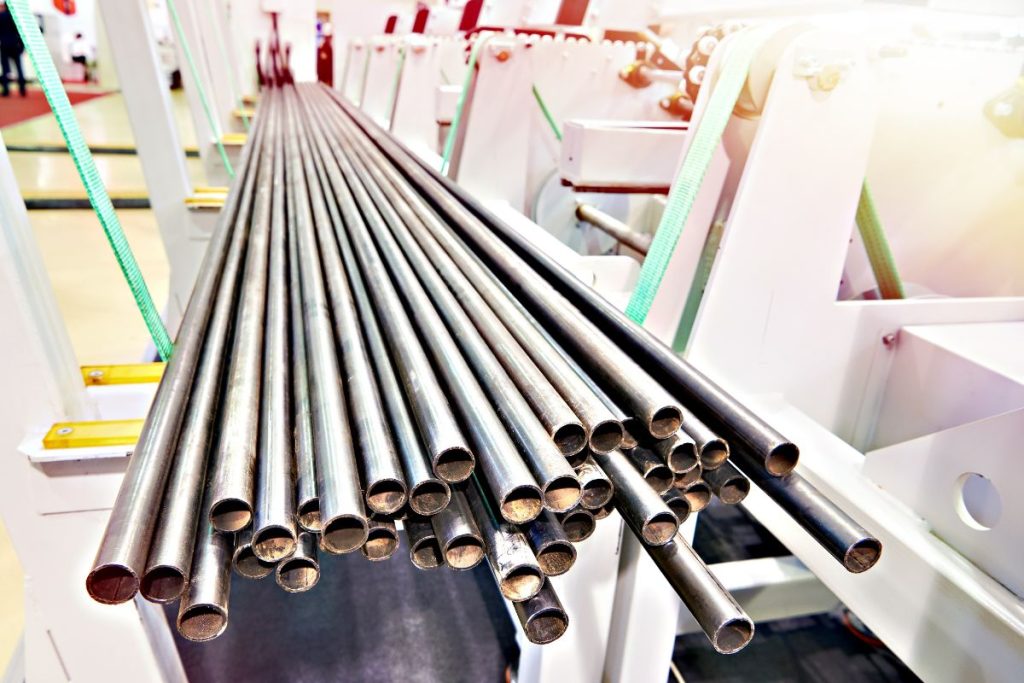What are the types of zinc coatings for pipes?
- Organic and inorganic zinc coatings
- Galvanized
- Zinc plating
- Thermal spray
- Mechanical plating
Overview
- Zinc coatings are used in various types of industries to ensure their piping systems are resistant to corrosion.
- Several common types of coatings include organic and inorganic zinc coatings, galvanized, zinc plating, thermal spray, and mechanical plating.
- Consumers and industries need to know the different types of zinc coatings as they can affect how long a pipe system can last.
Corrosion, erosion, and rusting resistance are some of the key features to consider when purchasing and installing pipes. These contribute to their longevity and reliability, especially in industries prone to moisture and chemical exposures.
With its wide array of available uses, zinc coating is one of the most common ways to enhance a pipe’s durability. Knowing and understanding the processes involved in the various types of zinc coatings is essential when selecting pipes for your project. Read on to learn more.
Why Choose Zinc-coated Pipes?
Pipe coating and pipe lining both make a pipe resistant to corrosion. However, there is a distinct difference between these two processes. Pipe coating is achieved by spraying or dipping the coat onto the pipe, which enhances its durability.
While these are used to coat pipes, zinc is an industry favorite for a reason. It is a brass component with a varied set of useful properties. It is lightweight, self-healing, flexible, and easy to paint. Due to its natural resistance to the elements, it is used for corrosion control systems.
Furthermore, zinc is the least expensive and is one of the most readily available metals for pipe coating. It also prevents moisture and oxygen from reaching the steel’s surface, making it an ideal coating for galvanized iron pipes.
Types of Zinc Coatings for Pipes
The zinc coating can be applied to pipes in several ways and through different binders. Here are some of the most common types of zinc coating used by manufacturers.
Organic and Inorganic Zinc coatings
Organic and inorganic zinc coatings distinguish themselves from each other through their binding. The former uses more natural bindings such as epoxy, chlorinated rubber, and urethane, while the latter utilizes a silicate binder.
Additionally, organic zinc coatings are suitable for automotive components and equipment in the energy industry. Meanwhile, inorganic counterparts are typically used to protect equipment and machinery in chemical plants, transportation equipment, and steel structures in construction projects.
Galvanized
Galvanized applies a protective zinc coating to steel or iron to prevent rusting or corrosion. The most common technique for this procedure is hot-dip galvanizing, in which the pipe is immersed in a molten zinc bath. This results in a thick and durable zinc coating, providing excellent corrosion protection.
Here at Supreme Steel Pipe Corp., you can find quality, reliable, and corrosion-resistant galvanized iron pipes perfect for a diverse set of applications—from electrical poles, structural piping, water and sewage systems, and agriculture.
Zinc Plating
This process, also known as zinc electroplating, involves applying a thin layer of zinc to the surface of steel or other metals to protect it from corrosion. There are four types of zinc plating such as yellow zinc plating, blue or clear zinc plating, black zinc plating, and acid zinc plating.
Yellow zinc plating is applied in the automobile industry.
Blue/clear zinc plating is used in machine parts, screws, washers, and other ornamental purposes.
Black zinc plating is utilized in black plating or black oxide to give it its signature dark finish, making it suitable for decoration.
Acid zinc plating is often used for hard-to-place surfaces.
Thermal Spray
Thermal spraying melts the zinc or zinc alloy and sprays the droplets onto the pipe. The zinc coating is applied through two common methods: the arc spray or the combustion flame spray.
This type of coating can be applied to a larger area as well as to structures that are already completed without running the risk of distorting the structure. It has also been used on hard-to-reach areas, giving it an edge over the other types of zinc coatings.
Mechanical Plating
Mechanical plating, also known as peen plating or mechanical galvanizing, applies a coating of zinc to the metal parts by tumbling them together in a barrel. This unique process mechanically bonds the zinc particles to the surface of the metal without the use of heat or electricity.
It can coat internal surfaces and more complex shapes than other types of coating. However, while this process provides the metal with a layer of protection, the coating is thinner compared to the other processes, making it more susceptible to corrosion.
Key Takeaway
Zinc coatings apply to a range of industries—thanks to the versatility of its coatings. By choosing the right coating method, you can ensure that your pipe and piping system can perform their best even under challenging conditions.
If you’re looking for a one-stop shop for high-quality pipes in the Philippines, don’t hesitate to visit our website or reach out to us today! Our dedicated and highly experienced team will be happy to assist you.
